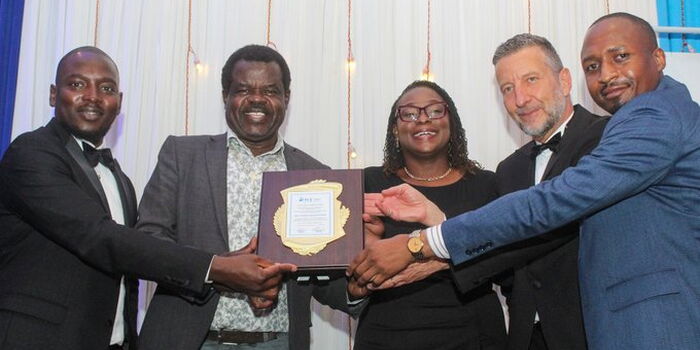Busia Senator has been honoured with the prestigious 2025 Vanguard Warrior Award by the International Commission of Jurists Kenya (ICJ-Kenya) for his relentless defence of the Constitution and human rights.
The award, presented during a ceremony attended by legal luminaries on Thursday, December 11, 2025, recognizes Omtatah's fearless pursuit of accountability through strategic public interest litigation that has challenged government overreach.
Law Society of Kenya (LSK) President Faith Odhiambo congratulated Omtatah, acknowledging his unwavering commitment to justice.
"Congratulations Senator Okiya Omtatah for being the 2025 vanguard warrior. You are a fearless defender of the Constitution and a symbol of integrity and justice in our nation," stated Faith Odhiambo.
Omtatah has built a reputation as Kenya's most prolific public interest litigator, filing numerous cases against government policies he deems unconstitutional.
His landmark victories include blocking the rollout of the controversial Huduma Namba system, challenging the appointment of judges, and, most recently, leading legal battles against the Finance Act 2024 that sparked nationwide protests.
The Senator's determination saw him file over 30 constitutional petitions in the past two years alone, earning him both admiration and criticism from different quarters.
ICJ-Kenya Vice-Chairperson Purity Makori delivered a powerful tribute, underscoring the profound and lasting difference made by Omtatah.
"Your relentless pursuit of accountability, your strategic public interest litigation, and your dogged defence of constitutionalism have made you a true shield for the citizenry," Makori said.
The event also honoured veteran lawyer Dr. John Khaminwa as the 2025 Jurist of the Year for his lifelong dedication to the legal profession and mentorship of generations of lawyers.
The ceremony was notably honoured by the attendance of former Justice Minister, the highly respected Martha Karua.
The ceremony received a significant endorsement from the international community with His Excellency Mirko Giulietti attending as the Chief Guest.
The ICJ chairlady also called on legal practitioners and civil society to remain committed to protecting the vulnerable and upholding constitutional principles.
"Let the stories of our awardees fuel our resolve to protect the vulnerable, challenge the unjust, and uphold the sanctity of our Constitution," she concluded. By





